Dibenzylamine
- CAS NO.:103-49-1
- Empirical Formula: C14H15N
- Molecular Weight: 197.28
- MDL number: MFCD00004770
- EINECS: 203-117-7
- SAFETY DATA SHEET (SDS)
- Update Date: 2025-12-14 10:02:33

What is Dibenzylamine?
Chemical properties
colorless to light yellow oily liquid with ammonia odor. soluble in ethanol and ether, insoluble in water.
The Uses of Dibenzylamine
Dibenzylamine is used to prepare rubber accelerator for the vulcanization process and reaction-stoppers. Dibenzylamine type accelerators reduce nitrosamine production in the compounding process. It is also used to produce dibenzyl-nitroso-amine.
Preparation
Dibenzylamine is obtained by the reaction of benzyl chloride and liquid ammonia in ethanol.
What are the applications of Application
Dibenzylamine is an important organic synthesis intermediate, mainly used to produce efficient and non-toxic vulcanization accelerators tetrabenzylthiuramdisulfide (TBZTD) and zinc dibenzyldithiocarbamate (ZBEC). Synthesize penicillin and curing agent for rubber and plastic curing, and can be used in the detection of cobalt, cyanate, and iron.
Definition
ChEBI: Dibenzylamine is an aromatic amine.
Biological Functions
Dibenzylamine (DBA) has anticonvulsant effects. It can block NMDA-evoked currents in a concentration and voltage-dependent manner. This conclusion was researched in an audiogenic seizure-susceptible mouse model. It possesses antiproliferative properties and could be of interest for the development of new antitumor drugs.
Synthesis Reference(s)
Tetrahedron Letters, 26, p. 4633, 1985 DOI: 10.1016/S0040-4039(00)98771-9
The Journal of Organic Chemistry, 60, p. 5969, 1995 DOI: 10.1021/jo00123a041
Hazard
Dibenzylamine is danger.
H302 (99.32%): Harmful if swallowed [Warning Acute toxicity, oral]
H314 (57.43%): Causes severe skin burns and eye damage [Danger Skin corrosion/irritation]
H315 (42.57%): Causes skin irritation [Warning Skin corrosion/irritation]
H319 (42.57%): Causes serious eye irritation [Warning Serious eye damage/eye irritation]
H412 (32.43%): Harmful to aquatic life with long lasting effects [Hazardous to the aquatic environment, long-term hazard]
Purification Methods
Purify the amine by distillation in a vacuum. It causes burns to the skin. The dihydrochloride has m 265-266o (from MeOH/HCl), and the tetraphenyl boronate has m 129-133o. [Bradley & Maisey J Chem Soc 247 1954, Hall J Phys Chem 60 63 1956, Donetti & Bellora J Org Chem 37 3352 1972, Beilstein 12 IV 2179.]
Properties of Dibenzylamine
| Melting point: | -26 °C (lit.) |
| Boiling point: | 300 °C (lit.) |
| Density | 1.026 g/mL at 25 °C (lit.) |
| vapor pressure | 1-1013hPa at 113.1-286℃ |
| refractive index | n |
| Flash point: | 290 °F |
| storage temp. | Keep in dark place,Inert atmosphere,Room temperature |
| solubility | 0.4g/l |
| form | Liquid |
| pka | pK1:8.52(+1) (25°C) |
| color | Clear colorless to light yellow |
| PH | 8.9 (H2O, 20℃) |
| Odor | ammonia-like odor |
| Water Solubility | 0.05 g/L (20 ºC) |
| Merck | 14,3011 |
| BRN | 909664 |
| Dielectric constant | 3.6(20℃) |
| Stability: | Stable. Incompatible with oxidizing agents, acid anhydrides, acids, acid chlorides, chloroformates. |
| CAS DataBase Reference | 103-49-1(CAS DataBase Reference) |
| NIST Chemistry Reference | Dibenzylamine(103-49-1) |
| EPA Substance Registry System | Dibenzylamine (103-49-1) |
Safety information for Dibenzylamine
| Signal word | Danger |
| Pictogram(s) |
 Corrosion Corrosives GHS05  Exclamation Mark Irritant GHS07  Environment GHS09 |
| GHS Hazard Statements |
H302:Acute toxicity,oral H314:Skin corrosion/irritation H410:Hazardous to the aquatic environment, long-term hazard |
| Precautionary Statement Codes |
P270:Do not eat, drink or smoke when using this product. P273:Avoid release to the environment. P280:Wear protective gloves/protective clothing/eye protection/face protection. P301+P312:IF SWALLOWED: call a POISON CENTER or doctor/physician IF you feel unwell. P303+P361+P353:IF ON SKIN (or hair): Remove/Take off Immediately all contaminated clothing. Rinse SKIN with water/shower. P305+P351+P338:IF IN EYES: Rinse cautiously with water for several minutes. Remove contact lenses, if present and easy to do. Continuerinsing. |
Computed Descriptors for Dibenzylamine
| InChIKey | BWLUMTFWVZZZND-UHFFFAOYSA-N |
New Products
4,4-Difluoropiperidine hydrochloride tert-butyl 9-methoxy-3-azaspiro[5.5]undecane-3-carboxylate Indole Methyl Resin N-Isopropylurea N,N-Dicyclohexylcarbodiimide(DCC) MELDRUMS ACID 5-METHYLISOXAZOLE-4-CARBOXYLIC ACID Magnessium Bis glycinate Zinc ascorbate 1-bromo-2-butyne 2-acetamidophenol 9(10H)-anthracenone Erythrosin B, 4-Piperidinopiperidine 2-((4-morpholinophenylamino) (methylthio) methylene) malononitrile 2,4-dihydroxybenzaldehyde 3-(4-morpholinophenylamino)-5-amino-1H-pyrazole-4-carbonitrile Methyl 2-methylquinoline-6-carboxylate 2,6-dichloro-4-nitropyridine 4-Bromo-2-chlorobenzonitrile 2-(benzylamino)acetic acid hydrochloride 4-(tert-Butoxycarbonylamino)but- 2-ynoic acid 3,4-dihydro-2H-benzo[b][1,4]dioxepine 1-Phenyl-1-cycloprppanecarboxylicacidRelated products of tetrahydrofuran

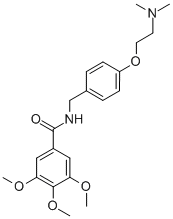
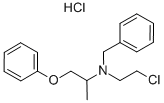

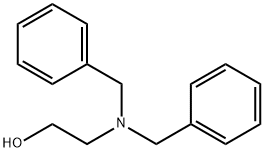
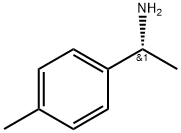
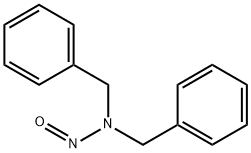
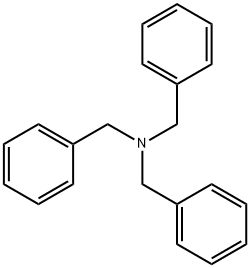
You may like
-
 Noradrenaline EP Imp F 96.10View Details
Noradrenaline EP Imp F 96.10View Details
103-49-1 -
 N,N-Dibenzylamine 103-49-1 98%View Details
N,N-Dibenzylamine 103-49-1 98%View Details
103-49-1 -
 103-49-1 N,N-Dibenzylamine 98%View Details
103-49-1 N,N-Dibenzylamine 98%View Details
103-49-1 -
 Dibenzylamine CAS 103-49-1View Details
Dibenzylamine CAS 103-49-1View Details
103-49-1 -
 Dibenzylamine CAS 103-49-1View Details
Dibenzylamine CAS 103-49-1View Details
103-49-1 -
 Dibenzylamine 98% CAS 103-49-1View Details
Dibenzylamine 98% CAS 103-49-1View Details
103-49-1 -
 DIBENZYLAMINE For Synthesis CAS 103-49-1View Details
DIBENZYLAMINE For Synthesis CAS 103-49-1View Details
103-49-1 -
 Dibenzylamine CAS 103-49-1View Details
Dibenzylamine CAS 103-49-1View Details
103-49-1
